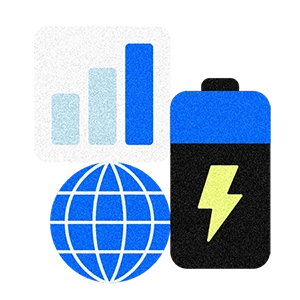Table of contents
My partner, Alex McCrery, and I met 22 years ago while working at Commander’s Palace, a storied, old-school New Orleans restaurant. He worked in the back of the house, and I worked in the front — a textbook FOH-BOH meet cute. In the years that followed, we noticed that dining rooms started to look very different — every kitchen seemed to be open, melding the front and the back of the house. But nobody had changed the uniforms. That’s when he had the idea that uniforms needed to be better. So we started Tilit NYC 13 years ago, designing fashion-forward workwear for the hospitality industry. Alex is the chief creative officer and I’m the CEO.
The whole idea behind Tilit is that we want people to feel really proud in their uniforms. Whether you run a sandwich shop, a hotel, or a Michelin-starred restaurant, your uniform isn’t a commodity product that’s a throwaway. We like to say, cooking is a sport, chefs are the athletes of the kitchen, and our workwear enables them to be their best. To help people feel comfortable, we use premium, smart materials, including moisture-wicking fabrics like washable waxed cotton and four-way stretch, whenever possible. We were also the first ones to put a tab on the back of every chef coat, shirt, or garment to help keep the apron strap off of people’s necks.
We decided early on that we didn’t want our brand to be about us. We want Tilit to be about chefs, the people, and the restaurants we collaborate with. Around half of my work as CEO is being in the community, going to events, and talking to brand partners in the restaurant industry or in adjacent industries. For us, collaboration has been important to the company from the beginning, and we’ve found investing in partnerships pays dividends in the future. Not only does it let us surprise and delight our community with fun products, but it helps with our own exposure and sales. Here’s how we do that, and how other brands can think about collabs to benefit their business and even their industry.
Always shoot your shot with your dream collaborators
When it comes to partnering and collaborating, the best thing to do is put yourself out there. I always like to say, shoot your shot, because you never know, right? As they say, you miss every shot you don’t take. That’s what I’ve done, and it’s led to partnerships that beget more partnerships. As an example, we’ve outfitted Tom Colicchio’s restaurants for about 10 years. He’s also head judge and executive producer on the Bravo series “Top Chef,” which led to an opportunity for us to become a chef coat partner on the show in 2021 because of our wonderful relationship with Colicchio. The Top Chef partnership led to Miller High Life approaching us for a collaboration aimed at culinary professionals, which was really fun.
If you’re been a part of a successful partnership, remember to maintain your relationships even after the project ends, because you never know what could come next. Also, to establish new partnerships, don’t be shy about telling people in your network in conversations (i.e. “I wish I could get in touch with XYZ”). Someone you know may be able to make the connection happen. And don’t be shy about cold outreach, either. Slide into people’s DMs, get straight to the point with a direct ask, and see where it goes.
Listen, learn — and get everything in writing
Typically, when exploring a potential partnership, I start with a discovery call. I always try to listen to other people’s goals first. I’ll ask things like, “What’s something you’ve always wanted to do but never had the bandwidth, or right partner to do it with?” We’ll see where our goals align and take it from there.
There are lots of different ways to collaborate, so it’s also important to discuss those details. Here are some types of partnerships to consider, based on my personal experience:
- Marketing partnerships: You foot the bill for all of the product and then sell it to recoup the funds.
- Celebrity and influencer collabs: Working with a well-known personality in your industry, you front the development costs, take the risk on the product, and do a revenue share for promotion.
- Even split partnership: You partner with a brand and split everything down the middle, including product cost, development cost, and profits as you each sell the product.
Whichever type of collab you choose, you must always, always have a contract, even if you’re not exchanging funds. If the partner is giving you marketing, you want to lay out X amount of posts, X impressions, X number of emails, X amount of additional support or whatever applies. Always, always have a contract, there are no handshake deals.
Find ways to unlock mutual benefits, together
We view our customers as potential partners and collaborators. Instead of telling them what they need, we want them to tell us what they want and then collaborate with them to deliver. One of the ways we do that is by sending out products for “wear testing.” In the case of a new women’s pant, for example, we recently sent 40 pairs to amazing chefs across the country who will test them and give us feedback. That doubles as market research that we learn from, and marketing that can boost awareness of our brand.
Think about ways that you can connect and collaborate with your audience. Maybe that means sending out products to customers or vendors for feedback, inviting your audience to weigh in on your latest offerings (similar to a focus group), and adapting those products based on what you learn. Or maybe it’s including others in your industry in publicity campaigns.
That’s another thing we do when it comes to models: Every person wearing our workwear on our website is a professional working chef. People in the industry who visit our website will often recognize their friends, which they love. Plus, we pay all of our chef models, and they receive products and assets that they can share on their own websites and campaigns, which expands the marketing reach. And again, every time we do a shoot, even if they’re a close friend, there’s a contract. Expectations are clear, and it’s a win all the way around.
Remember it’s OK to say no
Successful partnerships can bring exposure, boost revenue, and even lead to more partnerships. But it’s important to understand your goals, know your brand, and be prepared to say no to prospective partners who may not be the best fit. We’ve definitely been approached for opportunities that didn’t feel right, and we’ve simply said, “I don’t think our brands are aligned.” I think there’s a lot of power in saying no. Saying yes to the wrong things can be dilutive.
The success of a brand partnership is a little bit of science, a little bit of art. Through our collabs, we’ve listened to the industry and responded with product improvements they’ve asked for, and we like to say we’re the hospitality industry’s favorite fashion-forward workwear brand.
Going into every partnership we always have goals, and we benchmark sales goals against previous collaborations. But we also ask ourselves more artful questions—like, does this just feel fun? Is this something our community will think is cool and interesting? KPIs are important, but so is finding a sense of joy, whatever that might mean to you and your business.
![]()












